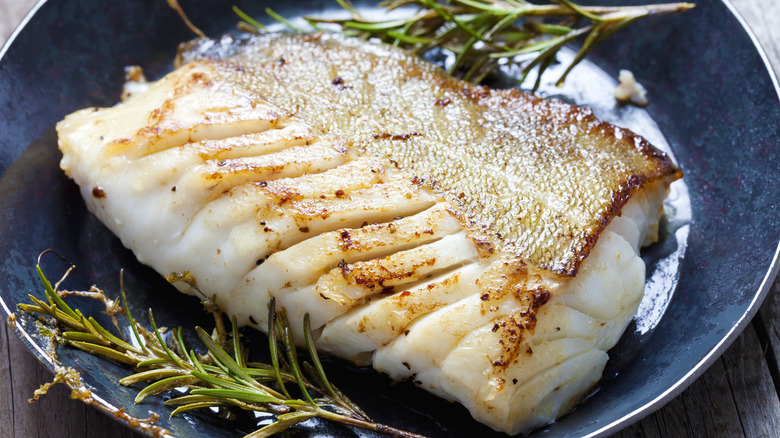Test Filets Are The Secret To Cooking Fish Stress-Free At Home
Cooking the perfect fish dinner at home is generally easy, but it can be a little tricky if you haven't done it before. Plus, every filet is a bit different in how it cooks, with some filets naturally thicker than others. Fish filets are delicate, so it's easy to overcook them, which is one of the biggest mistakes to avoid when preparing fish. On the other hand, undercooking seafood puts you at risk of contracting a foodborne illness. If you're cooking for a crowd, you don't want to play a guessing game — and there is one easy way to ensure the fish is cooked perfectly: buy a test filet.
If you have the budget and the time, buying one extra filet to "practice" with could do wonders when preparing your final dish; it will allow you to get the timing and temperature just right. Of course, you can eat the filet so you're not wasting food, and if you are worried about the extra cost, there are tricks you can use to get that test filet at as low a price as possible.
How to use a test filet to practice cooking fish perfectly
The point of practicing with a test filet is to not only understand when the filet is done but also how your own grill, stove, or oven cooks the fish. And while you can certainly find another use for that extra piece (such as making a creamy lohikeitto if you happened to cook salmon), the biggest downside is having to spend more money on that additional filet.
To save on buying salmon at the grocery store, or any other pricey type of fish, plan your meals around coupons; when any kind of seafood goes on sale, that's your chance to buy it. Plus, you can always buy more than you need and freeze it — just make sure to ask the fishmonger if it was previously frozen because you'll have to be careful regarding food safety if you plan to refreeze. Filets can only be refrozen if they were thawed in the fridge, and even then, they can be mushy. You can also buy frozen filets, which often come in bulk packages and ultimately cost less per piece than buying them at the counter. And finally, ask the fishmonger if there are any less expensive parts of the fish besides the filet. They might sell tails or other areas that still have meat on them but cost substantially less than a whole filet. These may not give as reliable practice results, but they can still help you get a feel for the fish.

